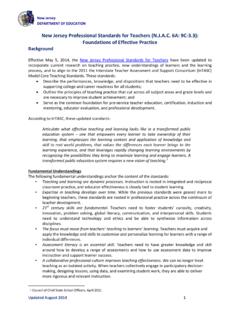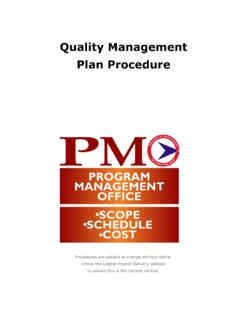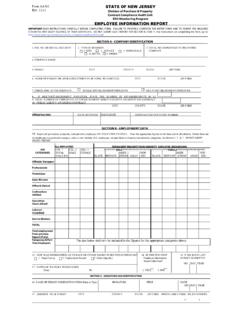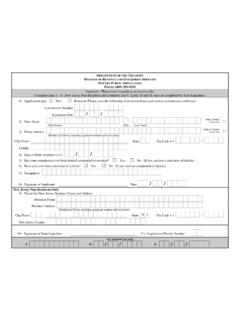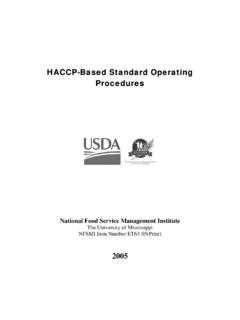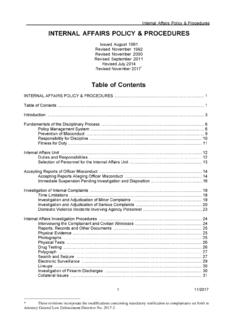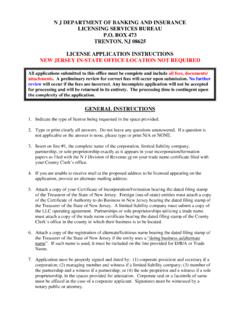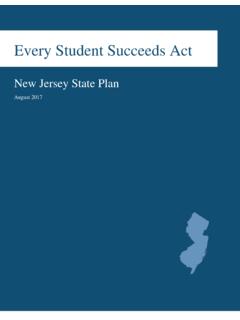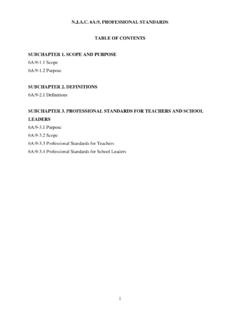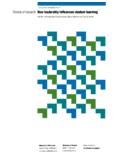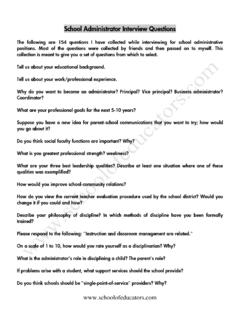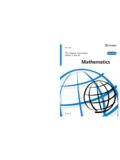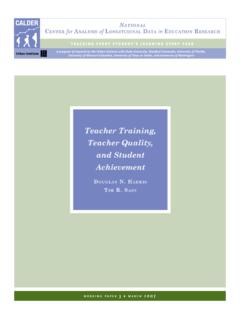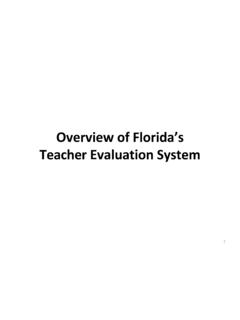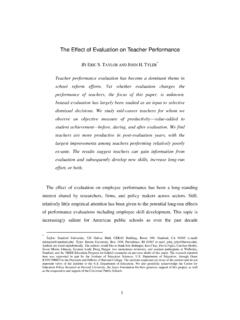Transcription of Administrator Goals: Guidance, Exemplars, and Optional ...
1 Administrator Goals: Guidance, Exemplars, and Optional Goal-setting Template Requirements Administrator goals should be accurate measures of a school leader's effectiveness. Superintendent determines how many goals administrators will set each year (between one and four). Goals are set in consultation with a supervisor by October 31 each year. Goals must be specific and measurable, based on student growth and/or achievement data, and receive a final score between 1 and 4. Recommendations Sustain a focus over multiple years --a multi-year goal. Select measures that the Administrator can impact in one year such as: When the goal is based on a new initiative or project and the Administrator 's efficacy is better demonstrated by process measures --outcomes other than student achievement -- such as teacher practice, teacher understanding, success of implementation, or stakeholder satisfaction.
2 In year one (and possibly year two) of a multi-year goal, a process measure may be a better reflection of the efforts of the Administrator (see examples above). Multi-year goals should evolve into goals that measure student achievement over one or more years. Align Administrator goals with district priorities, other goals in the district, and/or teacher goals (SGOs). Alignment Illustrated and Applied Establishing vertical alignment among goals at different organizational levels will provide a powerful lever for student growth. Alignment can be facilitated by the thoughtful sharing of data and collaboratively establishing priorities. The following graphic organizer depicts the two-way flow of data and how priorities established at each level can influence each other. Goal Alignment: A Graphic Organizer A district uses Leadership Team meetings to collect and analyze selected data.
3 From the data analysis, the district establishes priorities. These collaboratively developed priorities inform goals at the central office, which, in turn, inform Administrator goals. District priorities are widely communicated and Administrator goals are communicated to the corresponding faculty and staff: Examples of Leadership Teams PLCs, DEAC, ScIP, Instructional Council, or Administrative Team Possible Selected Data Sets Student assessment results, aggregated observation data, or climate survey results Example of Establishing and Communicating Priorities The ScIP at the high school requests a component-level analysis of observation data and due to the low average score, determines that student engagement should be a building-level priority in the upcoming year which they share at the June DEAC meeting. Process/Exemplars: The following pages illustrate a six-step process for constructing Administrator goals, followed by examples of goals from elementary, middle, and high school administrators.
4 There is also an Optional template for recording your own Administrator goals. Administrator Goals: Guidance, Exemplars, and Optional Goal-setting Template Creating Administrator Goals: A Process The focus and rationale provide the supervisor with an understanding of what this goal will address, why the goal is important, and how it is connected to student learning. The rationale Establish a Focus/ could be found in: Provide a Rationale a trend, gap, or pattern in student learning data;. a district priority that each school is asked to address through an Administrator goal; or research, an innovative strategy, or a program or curriculum slated for implementation. The measure --what the success will be measured by -- can be: a direct measure of student learning when making modifications to a process, program, or curriculum that has been in place for at least a year;. Select a Measure a process measure that captures the success of implementation, rather than its effect on student learning.
5 , such as when a new initiative is being implemented, and it takes time for a principal 's indirect effect to impact student outcomes; or the basis for the scoring plan. The baseline is the starting line for establishing how much growth or achievement can be expected. For measures of student achievement, consider using an average of growth or Establish a Baseline achievement over several years, as bigger groups provide more stable data. For process measures, baseline data may be collected through qualitative means, such as a stakeholder survey or focus group, or be established based on prior experience. Gathering additional information on where you are starting baseline data may help because one data point may not be enough. A SMART goal is Specific, Measurable, Achievable, Rigorous, and Time-bound. 2 notes on measureable Create a SMART. Figuring out how much growth or what level of achievement is not an exact science.
6 Goal One model for estimating a student learning target is: the SLO/SGO Model for Estimating Reasonable Growth1 (model provided by James H. Stronge, Stronge and Associates Educational Consulting, LLC). Action steps are what the Administrator creates to be sure that the goal is accomplished. Design Action Steps Some action steps may rely on other people but the Administrator should oversee all aspects of the action plan. The scoring plan must satisfy the following: Build a Scoring Plan Be mutually agreed to before the goal is approved;. Match outcomes to a four-point scale of effectiveness; and. Reflect rigorous, attainable growth or achievement at the effective level. a baseline and establish an ideal number for the measure. Calculate the difference between the current reality and the ideal Divide that number in half and then spread it over three years for annual yearly growth.
7 Example: graduation rate is currently 65% and we want it to be at 93%. Therefore, 93%-65%= 28% points. 28%/2=14% points. 14% points divided over three years% is about % points of growth/year. Administrator Goals: Guidance, Exemplars, and Optional Goal-setting Template Administrator Goal Form (Elementary Exemplar I). Overview This is an elementary school goal (grades 3-5) that uses student learning data (Lexile scores) to establish the rationale, as well as to serve as the outcome measure. This principal seeks to improve scores in three grade levels --grades 3, 4, and 5. She uses her baseline data to set targets for the increase in the percentage of students expected to meet or exceed expectations for each grade based on historical outcomes. The targets for this goal refer to the increase in the percent of students meeting or exceeding expectations by the end of the year. Notes Scoring plan o Effective is set at meeting the established targets.
8 Highly effective is set at exceeding the targets. There is a range at each level of effectiveness. The numbers were informed by the baseline data. This score plan contains action steps that o are derived from the contributing causes identified in the rationale, and. o highlight ways in which the principal will contribute to the success of this goal. Name District Grade or Grades Total # of students / # Target Date for Impacted by Goal Completion Elementary Grades Mrs. McAllister Smithville 333/333 June 2017. 3-5. Focus/Rationale Establish what this goal will focus on. Describe how it is connected to student learning and provide analysis, detail or research to support the approach you plan to take. Focus Reading in Grades 3-5. Rationale 2015 Scholastic Reading Inventory (SRI) End-of-Year Assessment (EOY) data indicates that, on average, 67 percent of the student population in grades 3-5 finished the 2015-16 school year reading below grade-level.
9 Root cause analysis reveals that inconsistencies in the implementation of the reading curriculum and in the interventions for at risk students are contributing to the problem. Reading is a foundational skill, critical to students ' success in meeting or exceeding the standards set forth in the New Jersey Student Learning Standards (NJSLS) in all content areas. Measure/Baseline Data Identify the measure this goal will address. Provide the corresponding baseline data. Measure The SRI EOY assessment will be used as the measure. Targets will be set for students in grades 3, 4, and 5at the end the 2016-17 school year. The intervening SRI administrations will be used to monitor progress and guide interventions over the course of the year. Administrator Goals: Guidance, Exemplars, and Optional Goal-setting Template Baseline The baseline is being established using a three-year average of SRI EOY data at each grade level 3rd grade: baseline: 20% of students are meeting or exceeding expectations for reading.
10 4th grade: baseline: 37% of students are meeting or exceeding expectations for reading. 5th grade: baseline: 42% of students are meeting or exceeding expectations for reading. This data has been relatively stable over the three years. No trends or patterns were detected that would further inform growth expectations. These data will be used to establish rigorous targets for growth in the percent of students meeting or exceeding expectations. SMART Goal Write a specific, measurable, achievable, realistic, and time-bound Administrator goal. By the end of School Year (SY) 2016-17, SRI data will demonstrate whether each grade-level is meeting or exceeding its target growth percentage for students reading at or above grade level. 3rd grade: target: 33% of students are meeting or exceeding expectations for reading (13% point increase). 4th grade: target: 47% of students meeting or exceeding expectations for reading (10% point increase).
